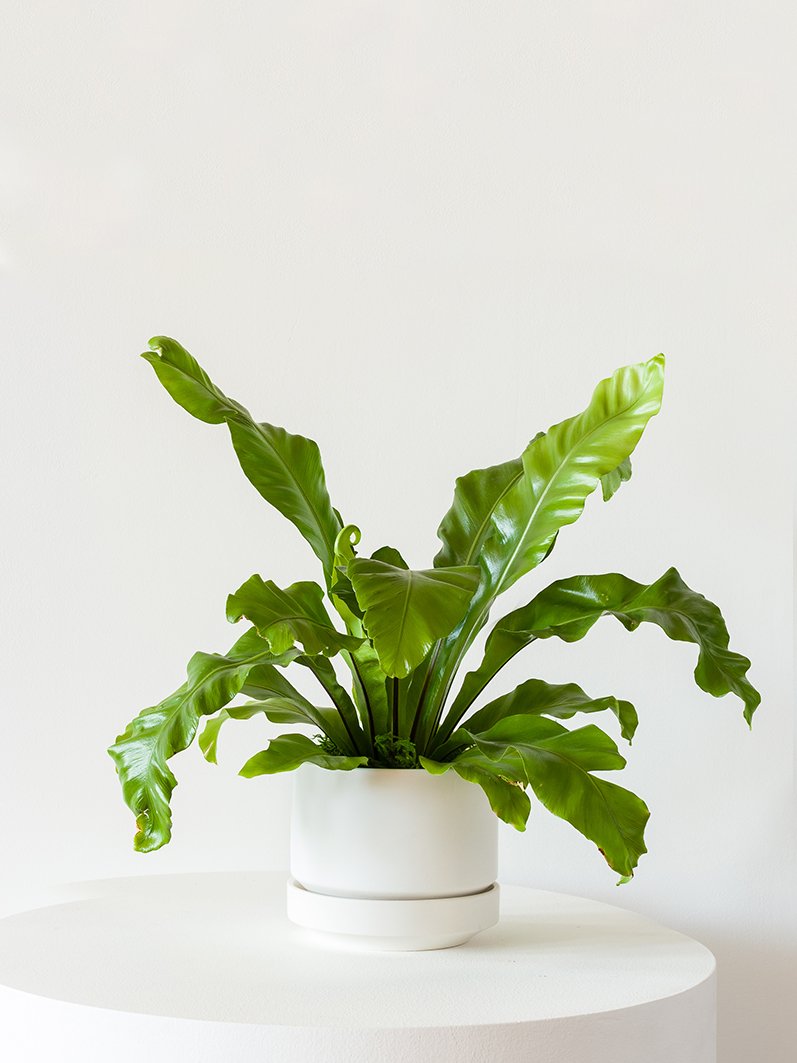Help! Why Are My Bird's Nest Fern's Leaves Yellow and Pale?
The Bird’s Nest Fern is the champion of the indoor ferns. Both low-maintenance and vibrant, its unique foliage sets it apart, and it’s far and away the easiest indoor ornamental fern to care for. Named for the way its quill-like leaves grow from a nest-like center, the Bird’s Nest Fern is a lush choice for tabletops and they make gorgeous centerpieces. But although it is low-maintenance, it is somewhat sensitive to light, which can result in pale and/or yellowing leaves. Not to worry! Read on to learn our simple steps on how to correct leaf discoloration and keep your Bird’s Nest Fern healthy and happy.
Pale Leaves: Too Much Light
Bird’s Nest Ferns have a preference for medium, indirect light. Too much bright light is simply too different from the light that they receive in their native, tropical environments, which are both moist and filtered by the canopies of other plants inhabiting the same biome. If your Bird’s Nest Fern is in a spot where it receives direct natural light, it will need to be moved to a space that receives diffuse, medium light. Similarly, if it is in a spot that receives bright light from artificial appliances, it will likely need to be moved to a space with light that is more gentle and less direct.
Yellow Leaves: Overwatering
Yellow leaves are one of Mother Nature’s most common signs of overwatering. This symptom can be seen consistently across many plant families, and the Bird’s Nest Fern is no exception. If its leaves are yellow, sagging, and have the appearance of holding a lot of moisture within them, the fern is likely overwatered. Remember that your Bird’s Nest Fern needs its soil to be kept consistently moist, not drenched. And never water directly within the center of the plant’s nest- always water along the outer edges of the plant’s soil. A watering can with a narrow spout can assist you with this.
If you’re concerned that your fern has been severely overwatered, lift it out of its ceramic pot (still within its plastic nursery pot) and check the ceramic for any signs of standing water. If water has pooled within it, dump it out. Allow the plant’s soil to dry to a consistently moist state before returning the fern to its ceramic pot, then resume your watering schedule: always aiming for consistent moisture, not soaking.
Further Support
If you follow the steps above and the condition of your Bird’s Nest Fern’s does not improve, don’t hesitate to reach out to our Plant Doctor Service. Just log into your Leon and George account and select “Contact Plant Doctor” from the menu. Then, upload photos of your plant as a whole, as well as close-ups of any areas exhibiting a pale or yellow tone, and provide details on the water your fern receives (both how much, and how often) as well as a description of its lighting environment. The Plant Doctor team will get back to you within 1-2 business days with an assessment, and guidance on how to get your fern back on track.
Bird’s Nest Fern
A resilient, low-maintenance and beautifully full indoor fern, the Bird’s Nest Fern’s claim to fame is its luscious, quill-like foliage, which grows in ample fronds from the plant’s center, resembling a bird’s nest. Bird’s Nest Ferns require medium light, consistent moisture and steady humidity. Ideal for tabletops and renowned for their use as eye-catching centerpieces.

